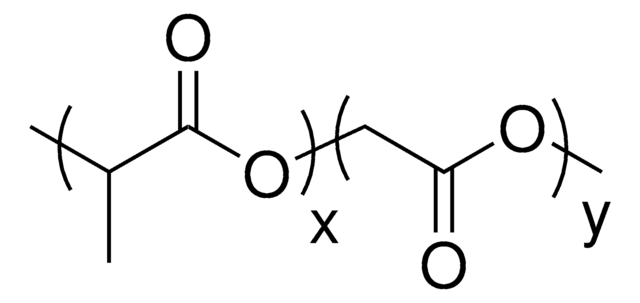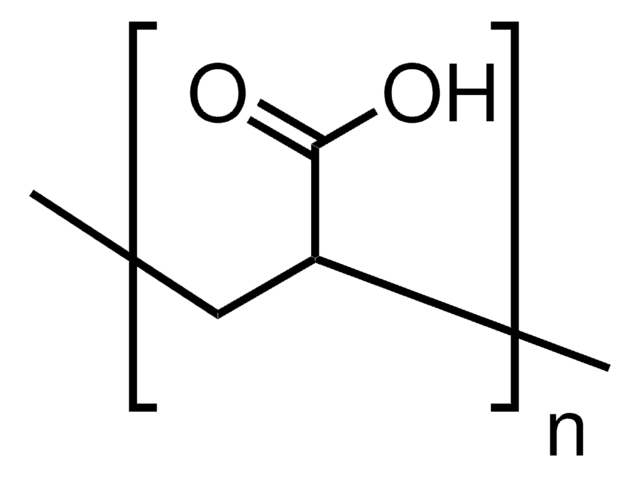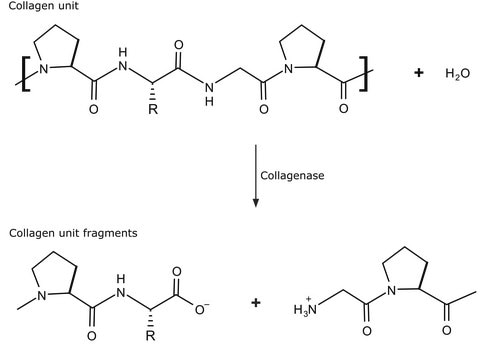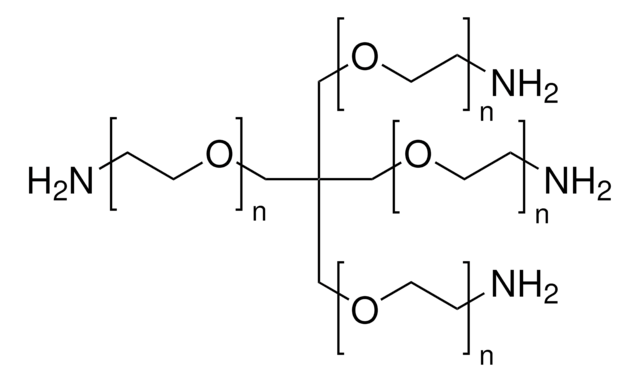908630
Poly(lactide-co-glycolide)-Flamma Fluor near-IR
lactide:glycolide (50:50), Mn 20,000-30,000
Synonym(s):
PLGA near IR, PLGA-FPI749, near IR conjugated PLGA
Sign Into View Organizational & Contract Pricing
All Photos(1)
About This Item
Linear Formula:
(C3H4O2)x(C2H2O2)y
UNSPSC Code:
12162002
NACRES:
NA.23
Recommended Products
form
powder or chunks
feed ratio
lactide:glycolide (50:50)
mol wt
Mn 20,000-30,000
average Mn 20,000-30,000
composition
Dye Content, 7.54 μg/mg (polymer)
color
blue to teal
storage temp.
−20°C
Related Categories
Application
Poly(lactide-co-glycolide)-Flamma Fluor near-IR is labelled with Flamma Fluor FPI749 near-IR dye. It can be used in the formation of fluoresent nanoparticles for in-vivo imaging applications.
wgk_germany
WGK 3
flash_point_f
Not applicable
flash_point_c
Not applicable
Certificates of Analysis (COA)
Search for Certificates of Analysis (COA) by entering the products Lot/Batch Number. Lot and Batch Numbers can be found on a product’s label following the words ‘Lot’ or ‘Batch’.
Already Own This Product?
Find documentation for the products that you have recently purchased in the Document Library.
Fanfei Meng et al.
ACS nano, 12(7), 6458-6468 (2018-06-20)
Fluorescence-based whole-body imaging is widely used in the evaluation of nanoparticles (NPs) in small animals, often combined with quantitative analysis to indicate their spatiotemporal distribution following systemic administration. An underlying assumption is that the fluorescence label represents NPs and the
Yihan Xu et al.
Journal of biomedical materials research. Part B, Applied biomaterials, 105(6), 1692-1716 (2016-04-22)
Poly (lactic-co-glycolic acid) (PLGA) copolymers have been broadly used in controlled drug release applications. Because these polymers are biodegradable, they provide an attractive option for drug delivery vehicles. There are a variety of material, processing, and physiological factors that impact
R Gref et al.
Science (New York, N.Y.), 263(5153), 1600-1603 (1994-03-18)
Injectable nanoparticulate carriers have important potential applications such as site-specific drug delivery or medical imaging. Conventional carriers, however, cannot generally be used because they are eliminated by the reticulo-endothelial system within seconds or minutes after intravenous injection. To address these
Our team of scientists has experience in all areas of research including Life Science, Material Science, Chemical Synthesis, Chromatography, Analytical and many others.
Contact Technical Service





